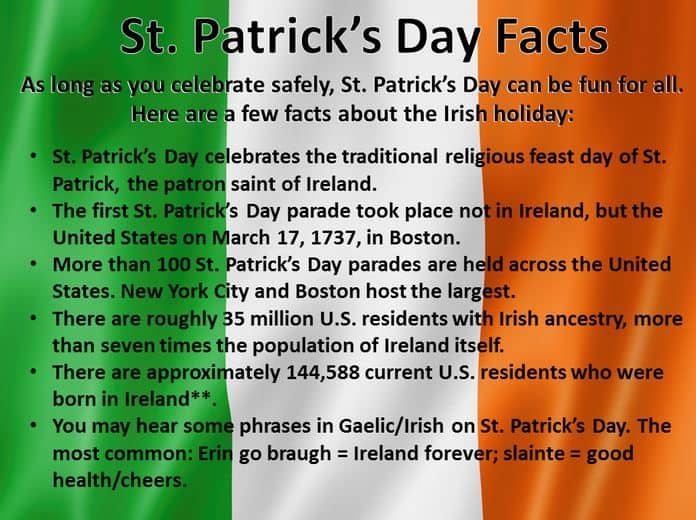The Enchanting Origins of St. Patrick’s Day: A Parent’s Guide
Hello there, lovely parents! Are you ready to embark on a magical journey through time to uncover the origins of St. Patrick’s Day? This celebrated day isn’t just about shamrocks and leprechauns; it’s rich in history and tradition. Prepare to be the cool parent who can share the fascinating backstory of this well-loved holiday with your kids!
Who Was St. Patrick?
Let’s start at the very beginning. Who was St. Patrick anyway? Born in the late 4th century, he was neither Irish nor named Patrick! That’s right, his birth name was Maewyn Succat and he hailed from Britain. At 16, young Maewyn was kidnapped by Irish raiders and enslaved in Ireland. This pivotal moment marked the start of his path to becoming St. Patrick, the patron saint of Ireland.
The Path to Sainthood
During his six years in captivity, Maewyn found solace and strength in religion, eventually converting to Christianity. After his escape, he returned to Britain, but Ireland called him back. He felt a strong divine message urging him to go back to the land of his captivity to spread Christianity. Adopting the name Patrick, he began his mission to convert the Irish folks, using the native shamrock plant to explain the Holy Trinity, hence the symbol’s strong association with the day!
The Legendary Snake Banisher
One of the most exhilarating tales about St. Patrick is his legendary expulsion of snakes from Ireland. While science tells us that these slithering reptiles were never native to the island, this metaphor signifies St. Patrick’s cleansing of pagan ideology from Ireland and the triumph of Christianity.
St. Patrick’s Day Becomes a Feast Day
The day of St. Patrick’s death, March 17th, became an important day for the Irish. This day transformed from a solemn religious observance into a feast day in his honor. The first recorded St. Patrick’s Day parade actually wasn’t in Ireland, but in America, where Irish soldiers serving in the English military paraded through New York City in 1762.
An International Celebration
Fast forward a few centuries, and St. Patrick’s Day has taken its place on the world stage. What began as an Irish religious observance has bloomed into an international celebration of Irish culture. From Dublin to Dubai, people don their greenest attire, enjoy traditional Irish foods, and engage in merry festivities.
Now, isn’t that a wonderful story to share? As we delve further into the history and traditions of St. Patrick’s Day, you’ll discover even more engaging tales and fun facts to impress your little ones. Stay tuned as we continue to explore how you can celebrate St. Patrick’s Day meaningfully as a family, understanding its cultural significance and creating joyful memories together.
By the end of our guide, you’ll not only be informed on the who, what, when, and why of St. Patrick’s Day, but you’ll also be fully equipped to bring the spirit of this day into your home with authenticity and joy. Whether it’s through crafts, recipes, or storytelling, this St. Patrick’s Day is set to be a memorable one!

5 Things Parents Should Know in Preparing for the Origin of St. Patrick’s Day
- The Real St. Patrick Was Not Irish:
Teaching your kids the truth behind St. Patrick can be a fun history lesson. Share with them how this patron saint, originally from Britain, found his way to Ireland through unexpected turns of fate and eventually became the iconic figure behind the day’s celebration.
- St. Patrick’s Role in Irish Christianity:
Though the story of St. Patrick driving out snakes is a myth, it holds a deeper meaning. Parents can discuss with their kids how St. Patrick’s teaching of Christianity altered the course of Irish religious practice, symbolized by this legend of banishing the snakes.
- The Shamrock’s Significance:
When you see shamrocks everywhere on St. Patrick’s Day, it’s an excellent chance to tell your children about the plant’s role in explaining the concept of the Holy Trinity. It’s also a perfect opportunity for a green-themed arts and crafts session!
- St. Patrick’s Day is a Cultural Bridge:
Highlighting how a religious feast day turned into a widespread celebration of Irish culture helps kids understand and appreciate the immigrant experience, especially how the Irish Americans popularized the parade and festivities we see today.
- Family-Friendly Celebrations:
Finally, anticipating a day full of festivities, explain to your children how the day evolved into a family-friendly event. From savory corned beef and cabbage to lively music and dance, St. Patrick’s Day is a time to cherish togetherness and have fun!
Engaging Activities for the Whole Family
The history of St. Patrick’s Day offers many jumping-off points for engaging activities with your kids. Consider decorating your home with shamrocks, baking Irish soda bread together, or enjoying a family movie night with films set in Ireland. You might even stage your own parade at home, complete with homemade costumes and Irish music!
Reflecting on the Past, Celebrating in the Present
In understanding the origins of St. Patrick’s Day, we can impart to our children the importance of history and cultural heritage. Celebrating with awareness and respect for the past enriches our present experiences and brings deeper significance to our festive traditions.
So, as you gear up for this St. Patrick’s Day, remember that you’re not just wearing green and attending parades – you’re part of a storied tradition that has traveled through centuries and across oceans to be with us today. It’s a celebration that honors the resilience of the human spirit and the ability of a collective memory to keep history alive through joyous celebration. Pin on those shamrocks, turn up the Irish tunes, and make some lovely memories with your family!
See more great Things to Do with Kids in New Zealand here. For more information see here
Disclaimer
The articles available via our website provide general information only and we strongly urge readers to exercise caution and conduct their own thorough research and fact-checking. The information presented should not be taken as absolute truth, and, to the maximum extent permitted by law, we will not be held liable for any inaccuracies or errors in the content. It is essential for individuals to independently verify and validate the information before making any decisions or taking any actions based on the articles.




